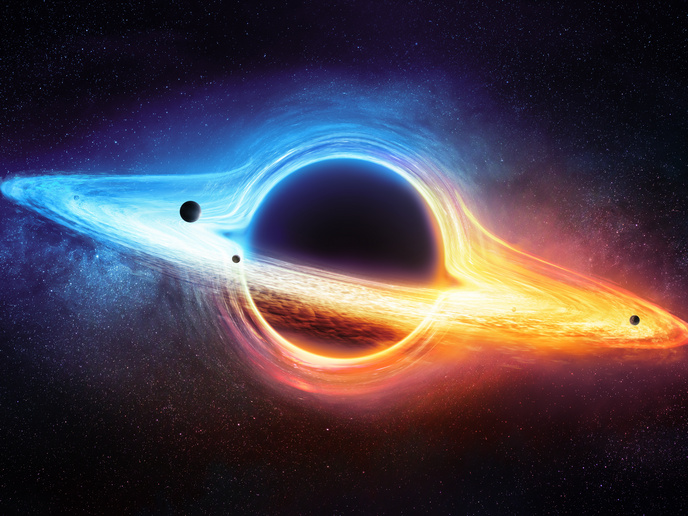New light on the magnetic fields of the Milky Way’s black hole
A global collaboration of scientists using a virtual Earth-sized telescope called the Event Horizon Telescope have presented the first polarised light image of Sagittarius A* (Sgr A*), the supermassive black hole at the centre of our galaxy. The new image shows strong and organised magnetic fields spiralling at the edge of Sgr A*, their structure much like that of the black hole at the heart of the M87 galaxy. The polarised image is discussed in a study(opens in new window) published in ‘The Astrophysical Journal Letters’ and further interpreted in a companion study(opens in new window) in the same publication. Both studies have received partial support from the EU-funded projects BLACKHOLECAM, RadioNet(opens in new window), M2FINDERS, SMILE and JETSET(opens in new window).
Magnetic fields in common
The decision to study Sgr A* in polarised light stemmed from the need to see exactly how far the similarities between the Milky Way’s supermassive black hole and its vastly larger and more massive counterpart in the M87 galaxy go. Do the magnetic fields around Sgr A* allow it to release powerful jets of material like those around M87’s black hole? The new studies suggest that there may indeed be a hidden jet in Sgr A* and that strong magnetic fields may be common to all black holes. Center for Astrophysics (CfA) NASA Einstein Fellow and study co-author Dr Sara Issaoun explains the research findings in a CfA news item(opens in new window): “What we’re seeing now is that there are strong, twisted, and organized magnetic fields near the black hole at the center of the Milky Way galaxy. Along with Sgr A* having a strikingly similar polarization structure to that seen in the much larger and more powerful M87* black hole, we’ve learned that strong and ordered magnetic fields are critical to how black holes interact with the gas and matter around them.” Polarised light made it possible for the astrophysicists to visualise in greater detail what was happening around the black hole. “By imaging polarized light from hot glowing gas near black holes, we are directly inferring the structure and strength of the magnetic fields that thread the flow of gas and matter that the black hole feeds on and ejects,” states CfA astrophysicist and study co-author Dr Angelo Ricarte. “Polarized light teaches us a lot more about the astrophysics, the properties of the gas, and mechanisms that take place as a black hole feeds.” CfA astrophysicist and study co-author Paul Tiede comments on the difficulties of capturing an image of the Milky Way’s black hole: “It is exciting that we were able to make a polarized image of Sgr A* at all. … Making a polarized image adds on the challenge of the dynamics of the magnetic fields around the black hole. Our models often predicted highly turbulent magnetic fields, making it extremely difficult to construct a polarized image. Fortunately, our black hole is much calmer, making the first image possible.” The BLACKHOLECAM (Imaging the Event Horizon of Black Holes) and RadioNet (Advanced Radio Astronomy in Europe) projects have ended. M2FINDERS (Mapping Magnetic Fields with INterferometry Down to Event hoRizon Scales) and JETSET (Launching, propagation and emission of relativistic jets from binary mergers and across mass scales) end in 2026 and SMILE (Search for Milli-lenses to discriminate between dark matter models) in 2027. For more information, please see: BLACKHOLECAM project(opens in new window) RadioNet project website(opens in new window) M2FINDERS project(opens in new window) SMILE project(opens in new window) JETSET project website(opens in new window)



